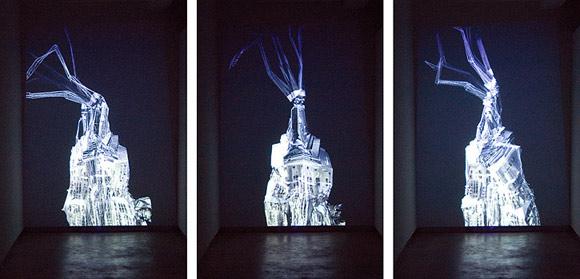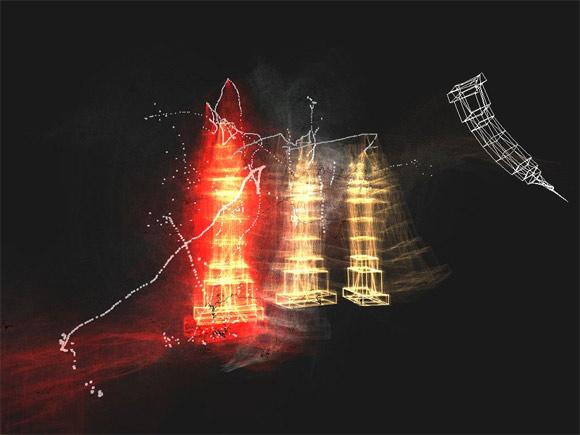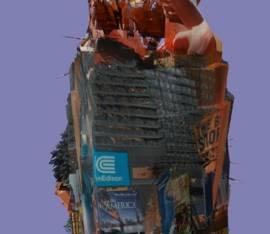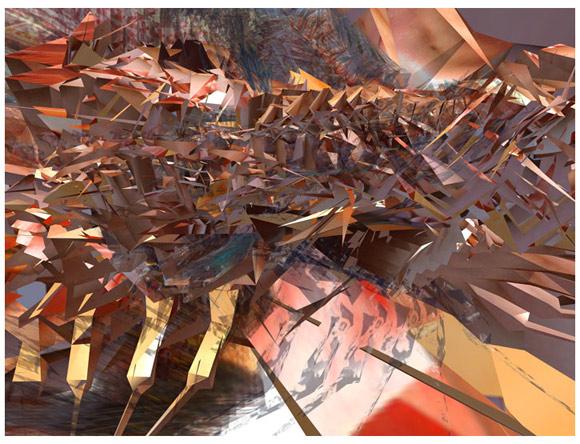Net Artist's Power Shift
Asami Novak
05.29.07

The Empire State Building melts in the hands of prominent net artist Mark Napier. His custom code gives the iconic skyscraper a new look for the digital age, while reminding viewers that software, not steel, is the new medium of power.
A trained painter, Napier spent 20 years working as a software developer, and he's been coding his designs exclusively for the web since 1995. As one of the net's first breakthrough artists, his digital creations have gone on to appear in top-tier terrestrial museums like the Guggenheim, the Whitney and the San Francisco Museum of Modern Art.
Here's a look at some of the visual highlights from his career, including projects from his latest exhibit, New Works, recently on display at bitforms gallery in New York.
OPEN SOURCE ART
Since his early days as a pioneer in the internet art world, Napier has relied on Java OpenGL to write software that allows him to layer two- and three-dimensional scenes packed with morphing textures, rippling lighting and user interactions. Touch a screen playing one of his creations, and expect the artwork to flinch or visually fall apart.
KK3.sculpt is the first piece Napier created that generated a virtual sculptural form. Several seconds of recorded motion are frozen to create what appears to be a solid structure.

TRACING LESSONS
In The Fall of Rome, Part II, Napier gives the Empire State Building -- the focus of his work over the last three years -- a skeletal quality using only lines to render and illuminate the structure.
"Loosely knit networks, information systems, software … these are the mediums by which power is now disseminating in the world," he says. "This transition is as substantial as the industrial revolution or the printing press -- it completely changes the way we think about geography, power and, especially, control."

INDUSTRIAL MEETS ORGANIC
The work Times Square is another shifting, deforming structure that continues to fold street images into itself.
Napier on the early days of designing artwork solely for the web: "What was really attractive (about the internet) was that you had a space to get art out to the world," says Napier. "Before that, working digitally meant delivering something on a CD."

BUILDING WITH FLESH

BITS AND PIECES
Cyclops Descends (IV pictured) is a series of eight prints, each picturing a different perspective of the same virtual form. Napier borrows the tale of the Cyclops in Greek mythology to express the anxiety caused by the changing notion of permanence.
While he continues to work with flexible forms and spaces, Napier is putting more focus on the human form in his current projects. The bitforms gallery in Seoul is scheduled to show his future works early next year.
Wired.com © 2007 Condé Nast Digital. All rights reserved.
